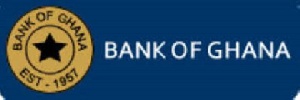 The average lending rate has fallen from 29per cent to 26.9 percent
The average lending rate has fallen from 29per cent to 26.9 percent
Businesses in Ghana are looking up to the completion of the recapitalization process for the banking industry to get increased access to loans after two consecutive years of sluggish growth in bank credit to the public sector.
Although the new equity finance being injected into the banks because of recapitalization is actually small compared to the industry’s current loans portfolio – bank loans are primarily funded by deposits rather than equity – business borrowers hope that the resultant improvement in the respective capital adequacy ratios of the banks will encourage them to step up their lending to private enterprise.
Already, the industry’s average capital adequacy ratio is 20per cent, up from 18 per cent a year ago, and twice the statutory minimum of 10per cent.
Also, banks risk asset quality as measured by their non-performing loans ratios, is improving, which their customers hope will also encourage them to increase their lending to the private sector.
By October the industry average NPL ratio was 20.1 percent, down from 21.6 percent a year earlier and significantly lower than the 23 percent reached at the height of the industry’s asset quality problems, in mid-2017.
Banks credit to the private sector grew in nominal terms by 11.4 per cent over the 12 months up to October 2018, this being slower than the 14.5 percent growth over the previous one year period. This was much smaller than the 19.6 percent growth in the industry’s total assets over the period.
Instructively, in real(inflation-adjusted) terms credit to the private sector grew by just 1.7percent over the year up to October, down from an almost equally dismal 2.9percent over the previous 12 month period.
Economists blame this, in part for the slower economic growth experienced by Ghana in 2018, compared to the previous year, as growth in bank credit has fallen well short of the economic growth it is supposed to finance.
However, the expectations of business borrowers may not come to pass, as banks continue to retreat from lending to the private sector,towards making risk-free investments in government treasury instruments. By October 2018, loans outstanding accounted for just 33.54 percent of the banking industry’s total assets, down from 35.8 per cent a year earlier and 40.2 percent as at October 2016.
Conversely, the banking industry’s investment in government securities accounted for 40.3 per cent of its cumulative total assets by October this year, up from 29.6 percent a year earlier and 27.0 percent as at October 2016.
Financial analysts point out that the Bank of Ghana’s decision to halt monetary easing for now, in order to defend the cedi, will constrain any possible turnaround in the banks attitude to making new loans.
Indeed, while short term treasury bill rates have risen over the past year – 91day treasury bill rates have climbed from 13.3 percent to 13.6 percent while182 day bill rates have risen from 13.8 percent to 14.4 percent over the 12months up to October this year – the average lending rate has fallen from 29per cent to 26.9 percent. These trends give further incentive for banks to invest in treasury bills rather than lend to the private sector.
However business borrowers are hoping that the major increase in banks shareholders equity will persuade banks to resume taking more risks in the form of loans to the private sector – which offer coupon rates far better than those on treasury bills – as they strive to increase their returns on equity to keep their owners happy.